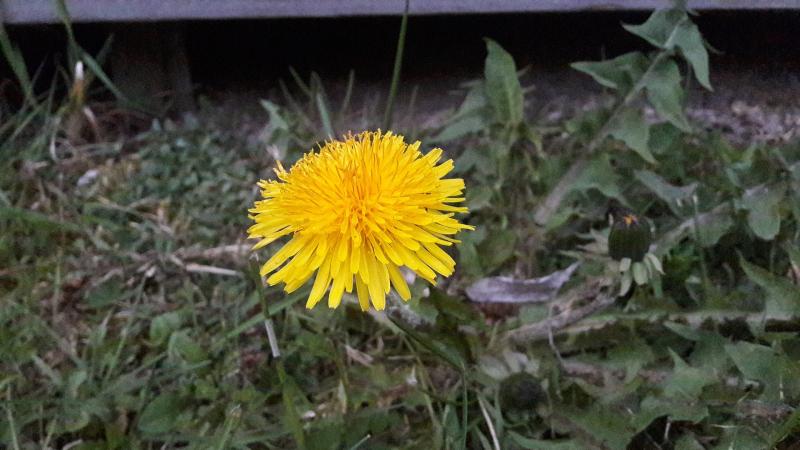Sarah Browning, Nebraska Extension Educator

Fall is best for control of tough weeds. Photo by Pixabay.
Weeds are usually the most visible lawn and landscape pest, and can be a major problem for homeowners. Weeds are opportunistic, taking advantage of thin areas in your lawn or openings in your landscape beds to grow and thrive. They compete with desirable plants for space, light, water, and nutrients, and detract from the appearance and function of your lawn or landscape.
For good control, it's critical to target weeds at their most vulnerable stage, so it's very important to make herbicide applications at the right time of year. For broadleaf perennial weeds like violets, ground ivy, thistle, and dandelions, fall is the best time of year to get them under control.
Why Fall Weed Control?
In fall perennial weeds begin moving carbohydrates produced by photosynthesis to the roots for winter storage instead of to upper plant parts for continued growth. If herbicides are applied at this time, the chemicals are transported to the roots along with the carbohydrates, killing the entire plant instead of just the parts above the soil surface.
In spring and summer carbohydrates produced in the leaves stay there. Roots transport water and nutrients upward too, with less movement of carbohydrates into the roots. As a result, herbicide applications made during spring and summer are often less effective than fall applications.
Identify Before You Spray
Before applying any herbicide, know what weeds you are trying to control. Get help from your local garden center or Nebraska Extension office, http://epd.unl.edu/, if you're not sure. Fall control of annual weeds like crabgrass, foxtail, knotweed or purslane is unnecessary and wasteful. These weeds only live for one summer and naturally die in fall so control is unnecessary.
Kill the Roots
When only a few weeds are present, they can be pulled or dug up by hand, but if root sections remain for difficult weeds like dandelion or bindweed, the weed can regenerate and grow again next year. So with difficult weeds, herbicides can more effectively translocate into the roots killing them.
When targeting difficult weeds, don't expect 100% control with one herbicide application. Two or three herbicide applications, 2-3 weeks apart will usually be necessary to control them. After making the herbicide application, don't mow for 2-3 days to allow the plants to take in the chemical.
Herbicide spot treatment, or spraying individual weeds, saves money on chemicals when only a few weeds are scattered throughout the lawn. It's also much more environmentally smart. Liquid products, whether you buy them premixed and ready-to-use or mix your own from concentrate, provide better coverage and control when compared to granular herbicide applications.
Many products are available for broadleaf weed control and may contain active ingredients such as 2,4-D, carfentrazone, sulfentrazone, quinclorac or triclopyr. These products are selective and won't damage grass, but use them with caution in landscape beds since accidental spraying or spray drift can damage shrubs and ornamental plants. Quinclorac is particularly effective at controlling wild violets.
Consider adding a spreader-sticker to your tank mix for even better control. Spreader-stickers are additives that help the chemical you apply spread over the weed leaf surface and adhere to it better. When you're trying to control weeds with waxy leaf surfaces, like wild violets, a spreader-sticker is particularly helpful. Look for products like Earl May's Turbo Spreader Sticker.
Granular post-emergent herbicides may be applied with fertilizer application twice in the fall, usually once around Labor Day and again around Halloween. Apply granular herbicides when the weed's foliage is wet to ensure the herbicide will stick to their leaves and be absorbed.
As with all chemical applications, be sure to read and follow all directions on labels and use personal protective equipment.
Search Our Archive
Associated Video
Fall Turf Management
Nebraska Extension Turfgrass Specialist Roch Gaussoin discusses strategies for fall turf management